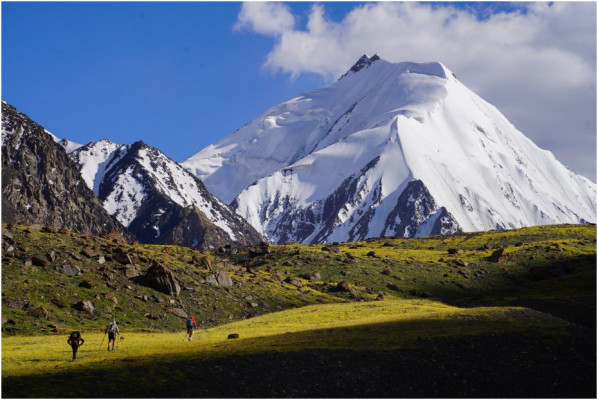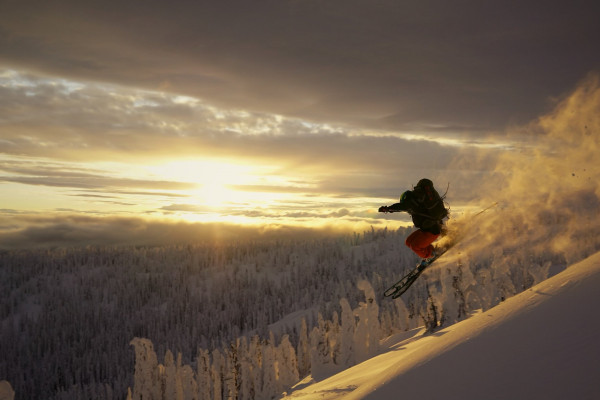2/2/2024 Ski Expedition Planning with Matt Randall
Why go on a trip/expedition in the first place?
Maybe you have skied in the same zones for years and are looking to branch out (I’m looking at you, Wasatch powder hounds!). Maybe you would like to experience a new culture, people, or region. Or, maybe you would like to push your limits in exotic locales. Whatever your motivation, there are many reasons to embark on extended trips and expeditions.
It can be intimidating and challenging to plan out a trip to a new place, whether that’s to another state or another country. Recently, my partners and I did some exploratory skiing in a remote area of Pakistan, which offered many valuable lessons and presented many logistical challenges.
Below is the process I use to plan trips that have led to successful, enjoyable, and safe trips abroad!
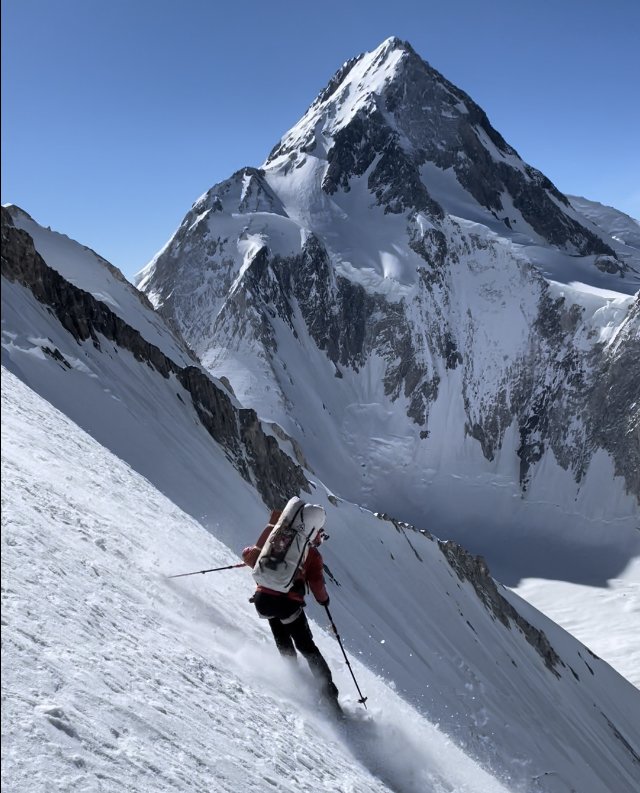
Determining an objective(s)
First things first, you will want to find an objective that inspires you and allows you to devote serious time and energy to research. I find books like The 50 Classic Descents of North America and Alpenglow Ski Atlas to be excellent sources of inspiration. Different types of objectives could be exploring a rarely visited area, exploring a new-to-you area, skiing a line or peak that is aesthetically pleasing, skiing a line that challenges you… the list goes on and on!
While there is a lot of beta out there, here are a few resources that have been useful to me when planning trips:
- Official Publication Sources
- American Alpine Journal, Mountain Project, Summit Post, 14ers.com, etc.
- Online Blogs
- Social Media
- Guidebooks
Maps
I find that making maps with planned ascent/descent routes and other pertinent info is an effective way to conceptualize an entire route, allows me to familiarize myself with an objective from the comfort of my living space, and fosters excitement about an upcoming trip!
When making a map, I'll often find an online picture or a topographical map and draw in the line of ascent/descent along with supporting information like elevation gain, mileage, pitch, and aspect.
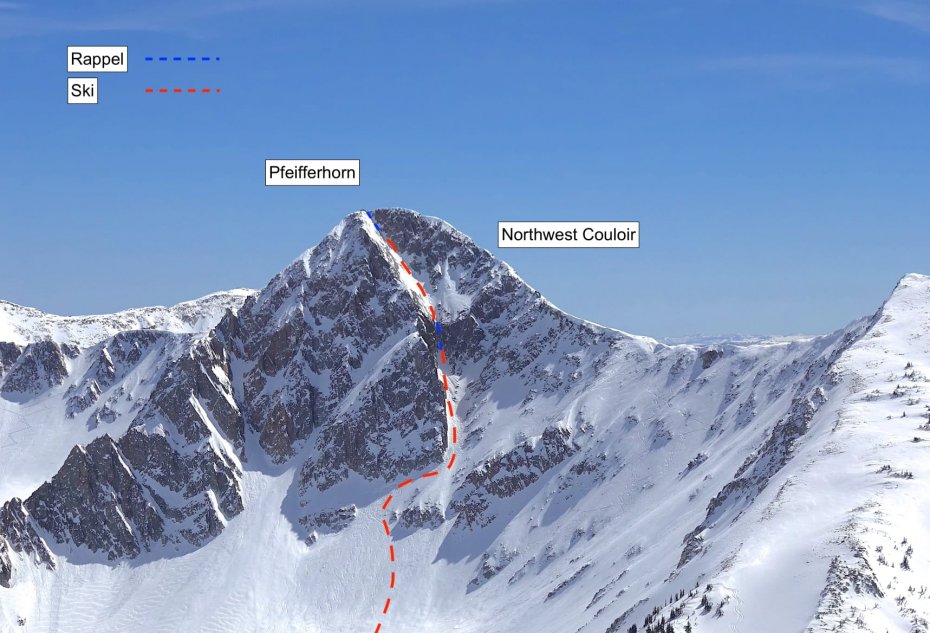
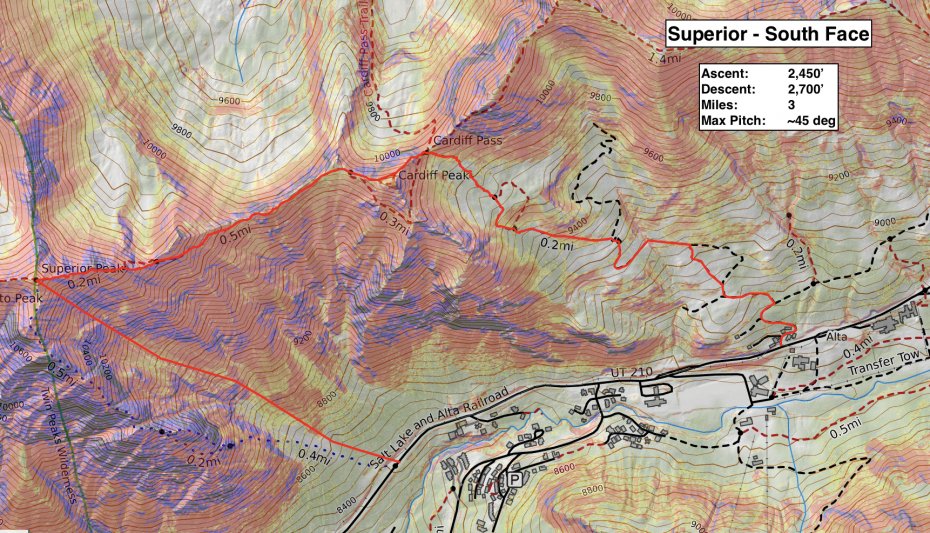
Establishing Trip Priorities
While planning an extended trip allows you to account for many variables, unfortunately, there are many factors outside of your control, such as weather, that can spoil even the best-laid plans. Because of these uncertainties, prioritizing objectives based on weather, geopolitical factors, and other variables, will allow you to maximize and get the most from your trip.
When establishing priorities, I find Excel to be a useful tool to lay out all relevant information in an easy-to-digest way. This can include: Additional info on each objective (elevation, vertical gain/loss, max angle, etc), an individualized rating of each objective based on how excited I am about it (Ex: 1 = not too psyched”, 5 = dream line), etc... Most guidebooks or other sources will assign stars to routes, so this can also be used to categorize routes by quality, and can help guide you where to expend most of your energy.
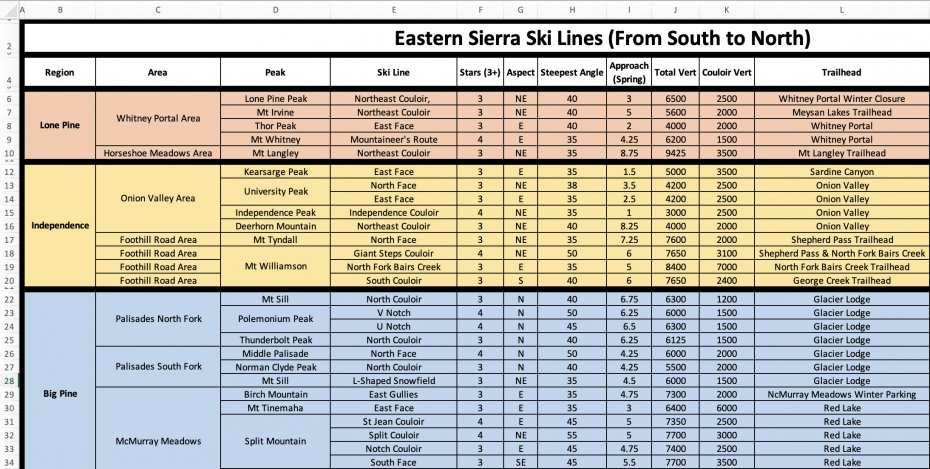
Assembling a Team/Finding a Partner(s)
As with life, having the right partner(s) is everything. Finding a partner who shares your risk tolerance, level of ability, and who you enjoy spending time with can make the trip a success or failure.
To find the right partner I find it useful to “know thyself.” Get a general idea of your abilities, goals, values, etc... Some example questions I ask myself are:
- What is my current fitness level?
- What terrain and conditions am I comfortable skiing in?
- What are my technical climbing abilities and rope skills?
- What do I hope to achieve from this trip?
- How would I describe myself as a teammate?
- Do I value partners who make decisions based on logic or emotion?
If you and your partner's answers vary drastically to the above questions, it is worth a discussion to make sure you are on the same page before committing to a scary objective and traveling halfway around the world!
Travel Considerations
Traveling can often be one of the hardest aspects of planning an extended ski trip. When traveling domestically, factors I weigh are:
- Driving vs Flying. Is it cheaper to drive or fly?
- What is the accessibility of rental cars that can safely transport us and our gear to our objective?
- What is the most reliable way to get to the location?
- How heavy is my gear? Will I incur excessive fees because of the weight of my luggage?
When traveling internationally, many more moving parts are needed. A few more questions I ask are:
- How hard is it to get a vehicle in the country?
- Will a local logistics provider drive you?
- What is the safest way to carry currency and pay for necessities?
- How can we distribute gear to stay under the airline luggage weight limits?
- How much room for error does my travel itinerary provide?
- Is my gear split amongst my luggage so that lost luggage won't derail my trip?
- Credit card points. This is not a plug for any of the card companies, however, responsibly using a credit card can be a great way to rack up points!
Round trip vs one-way. For international trips with a return date that is not set in stone, you may want to purchase a one-way ticket initially and have someone back home schedule your return flight. However, you run the risk of paying quite a bit if return flights are close to booked. If you get a round-trip ticket, flight insurance is recommended so that you can change your return flight free of charge.
I had a round-trip ticket to Pakistan in 2019 and on the return, I moved my flight so I wouldn’t stay longer and incur additional costs. To change my flight, it cost $1100 because I hadn’t gotten flight insurance… lesson learned.
Packing Lists
Making a packing list is a great way to ensure you minimize forgetting essential items, which could end up being showstoppers. On one trip to Colorado, I found that I packed everything but my climbing skins. Luckily, some friends were able to bail me out, however, a packing list would have mitigated this issue!
As with trip priorities, I find Excel to be an excellent tool when assembling a packing list. For group items, having a live Excel document can be quite advantageous to see what everyone has packed in real-time. Example things I place on a packing list are:
- Individual Items
- Climbing/skiing gear.
- Toiletries.
- Technical and casual wear.
- Entertainment (being stuck in a tent for weeks on end gets boring, really fast).
- Etc...
- Group Items
- Tents.
- Stoves and fuel.
- Comprehensive medical kit,
- Communication devices.
- Etc...
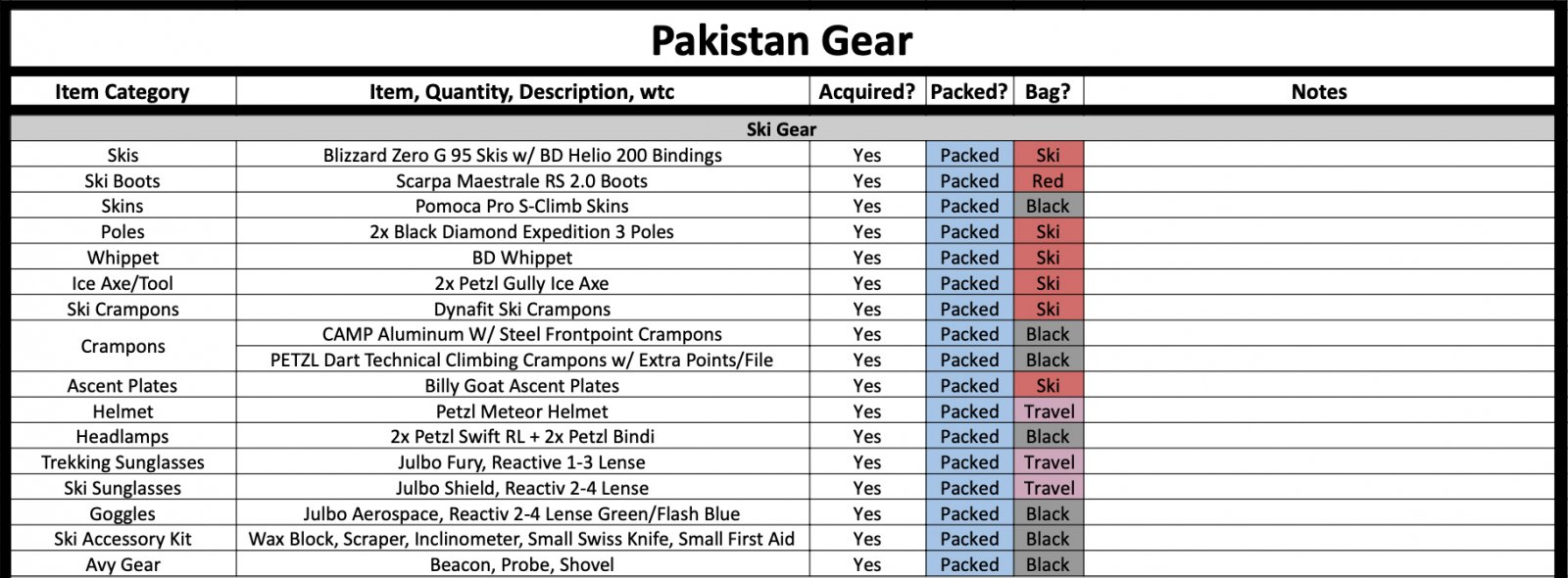
Communication
When traveling to a specific region, it is a good idea to know what communication is supported. Does the area have reliable cell service? Is it a mountainous environment that impedes walkie-talkie range? Are you weaving in and out of canyons that can make satellite communication spotty?
Knowing the environment and what communication devices/methods work best is essential. To communicate with loved ones or emergency personnel, I typically bring along an Inreach Mini or the Spot device (along with a cell phone). To maximize effective communication with partners, such as on a multi-pitch climb, I'll utilize devices like the Rocky Talkie, BCA Link 2.0, or similar.
Weather Forecasting
As noted earlier, even the best-planned expeditions can be derailed by inclement weather. Therefore, knowing the weather forecast for the area you are operating in can allow you to have a safe and fun trip while maximizing your trip priorities.
With access to the internet, you can often find many resources, such as NOAA, that allow you to view detailed forecasts for the region you are operating in, especially if you are in the contiguous USA. If traveling to bigger or more remote objectives, hiring a weather forecaster for your area can be quite nice and allow you to make the best plan possible to maximize your trip outcome.
International Considerations
If you are going international, there are additional considerations to take into account:
- Travel visa. Make sure to apply with plenty of buffer time in case your visa is held up. On a trip to Pakistan in the summer of 2022, our group applied for visas in February for our arrival in June. All visas were approved in March except mine, which ended up not being approved by the time our departure date arrived and I couldn’t board my flight. Luckily, it was approved a few days later, but it delayed our trip by several days.
- Travel insurance. International travel can be volatile, and travel insurance provides a safety net in the event of unforeseen losses or circumstances.
- In-country logistics providers. Hiring an in-country logistics provider is very helpful for developing countries, or in countries that have significant cultural differences. During our trip to Pakistan, our in-country logistics provider helped:
- Negotiate all of the services/ goods I needed in Pakistan, as we didn't know how to speak Urdu.
- Respectfully navigate the local culture, allowing us to meaningful and beneficially interact with the locals.
- Plan domestic flights.
- Coordinate porters and get gear to the required camps along the way.
- Help with permits and visas.
- Etc...
- Apart from trip insurance, rescue insurance can help offset the costs should an emergency occur on your trip. Different membership tiers with the American Alpine Club provide an insurance benefit. Many other companies specialize in these specialized insurance plans, as well.
I hope that you found some of this information to be useful in your planning process. If you have detailed questions about my planning process or trips in general, feel free to reach out at matthew.j.randall13@gmail.com.
Happy planning!
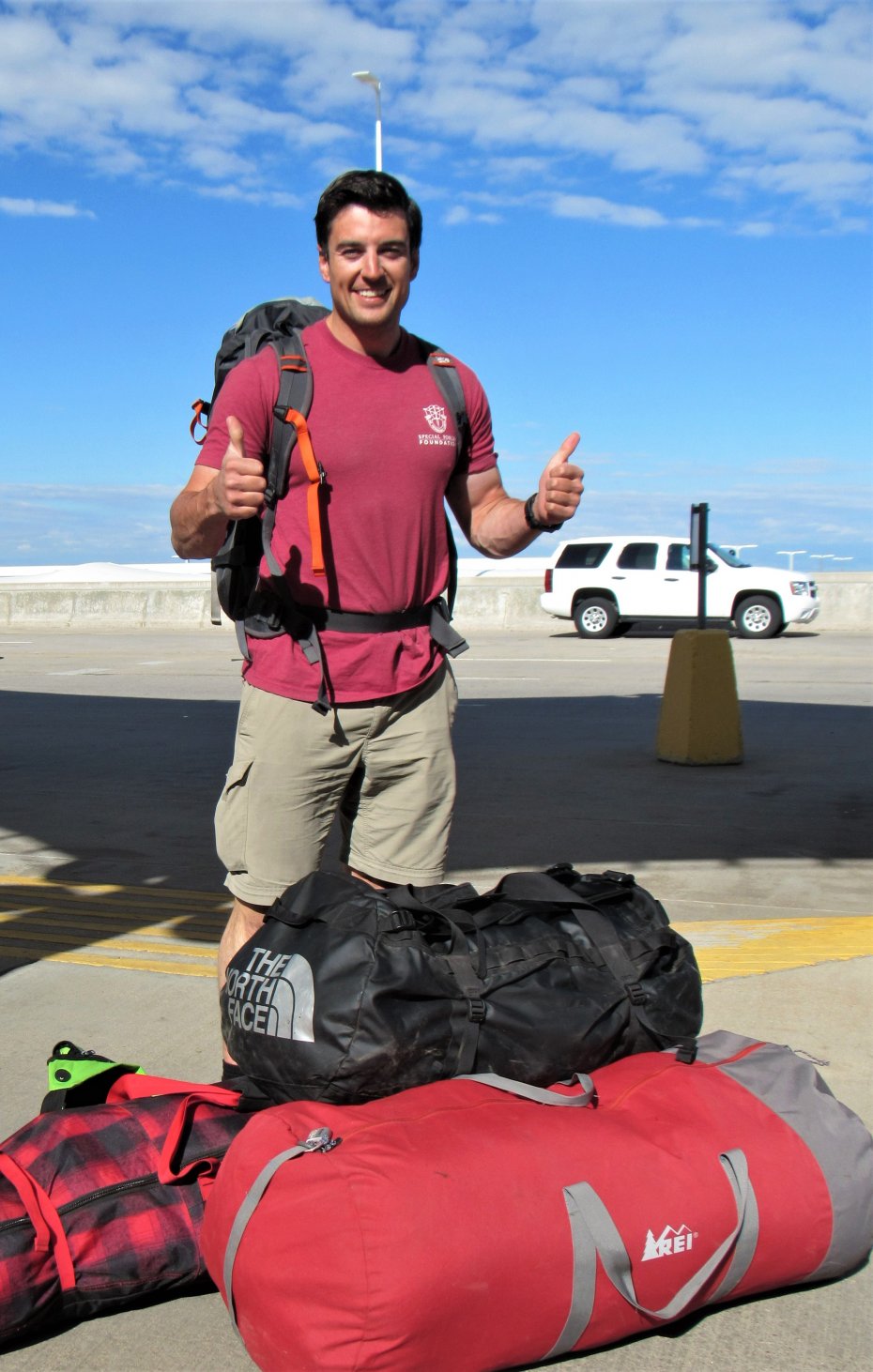
To keep up on Matt's exploits, follow him on Instagram.
This article was originally published on 8/24/2022 and was last updated on 2/2/2024.Comments
